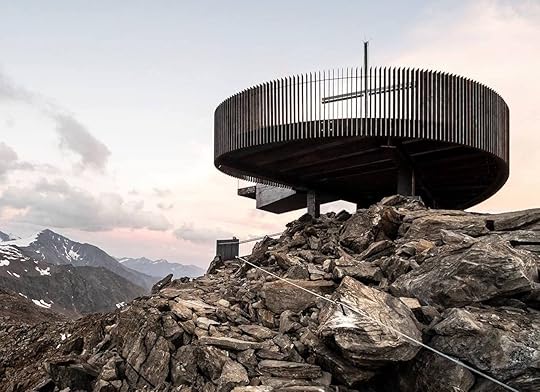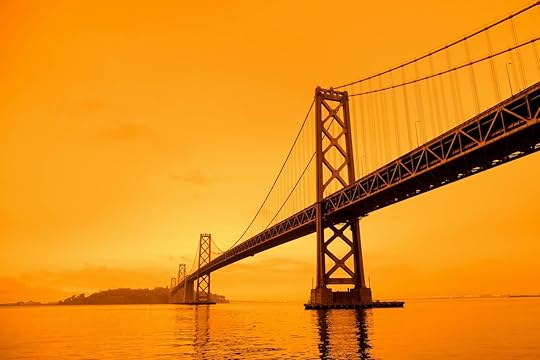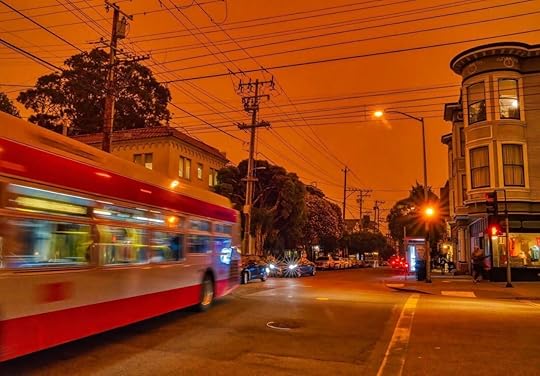Matador Network's Blog, page 787
September 11, 2020
Sandringham estate drive-in theater

The British Royal Family has a stuffy reputation, but there are some signs that the monarchy is willing to loosen up. Sandringham estate, Queen Elizabeth’s country home in Norfolk, England, is temporarily turning into a drive-in movie theater. On the weekend of September 25 through September 27, films like Rocketman, A Star is Born, the Greatest Showman, Toy Story, Grease, Moana, and 1917 will be shown in the royal setting.
The huge property in Norfolk sits 100 miles north of London. A designated area will be roped off for vehicles, and people will be able to sit or stand near their cars as they enjoy the films. Different food and drink vendors will be present on each day of the movie screenings.
Tickets for the screening cost $41, and for an extra $10 you can get premium seats, which include a larger bay for your car, deck chairs, a table, and popcorn.
The Royal Family’s hospitality doesn’t end at movie night. Throughout the course of the year, Sandringham estate will also host an apple-picking event at the estate’s orchard at the end of September, an enchanting light trail in November and December, a Christmas market during the holidays, and a theatrical performance of Romeo and Juliet in June 2021. 
More like thisArt + ArchitectureAll the British royal family’s residences that you need to check out
The post One of Queen Elizabeth’s estates will become a drive-in movie theater this fall appeared first on Matador Network.

Climate Win September 2020

This is The Climate Win, the most positive sustainability news around the world every week.
Ride-hailing company Lyft made big news when it pledged to become carbon neutral back in 2018 through the purchase of carbon offsets. Noticeably absent from this round of green marketing was Uber, which has been so silent on the matter that they actually declined to comment when a journalist from The Atlantic reached out following Lyft’s announcement. The world’s largest ride-hailing app broke its silence on the matter this week, announcing it would become a zero-emissions mobility platform by 2040.
Those like me are by now wary of companies that make eco-promises not set to mature until decades in the future. If we’re all still driving gas-guzzling cars in 2040, our ecosystem could look as bad as Exxon’s reputation after news broke of their environmental misleadings stretching back to 1977. And the headline of Uber’s pledge isn’t particularly noteworthy — given public sentiment for sustainability and the rapid scaling of green technologies, economic factors alone should lead us to an all-electric vehicular landscape by then. But let’s look deeper into Uber’s plan because it’s actually more nuanced than it at first appears.
In a press conference and corresponding press release, Uber CEO Dara Kharashowski laid out four primary goals for the company’s path to carbon neutrality. First, Uber will expand its “Uber Green” option that allows passengers to choose to ride in a zero-emissions vehicle. Second, the company will invest $800 million by 2025 to assist its drivers in a transition to EVs. It also released its first Climate Assessment and Performance Report and pledged more information to come in the future, in an effort to increase its transparency.
“Instead of going back to business as usual, Uber is taking this moment as an opportunity to reduce our environmental impact,” Kharashowski said in the release. “It’s our responsibility as the largest mobility platform in the world to more aggressively tackle the challenge of climate change.”
What’s most exciting for travelers and commuters is the final pillar of Uber’s plan: It will invest more in public transit and micro-mobility solutions, though an amount was not specified. Uber has long been accused of taking riders away from public transit and has sought to alleviate concerns in the past through efforts to work alongside transit systems, such as allowing riders to purchase tickets for transit through its app in some cities.
Micro-mobility itself is a huge issue. The term generally refers to transit options designed to get passengers across small distances, such as the electric scooters you see on city sidewalks. These transit options are intended to solve the “first mile, last mile” problem, which refers to getting a person from their home, office, or another place of origin to or from a public transit station that is just outside of walking distance, without them having to drive a personal vehicle.
Growth in a symbiotic relationship between Uber and public transit could do wonders for both passengers and struggling public transit systems. For example, Uber itself could become a bigger player in the first mile, last mile struggle if passengers increasingly used its app to get themselves from their home or office to a nearby train station instead of taking an Uber all the way to their destination. From Uber’s perspective, a better relationship between the two systems undoubtedly hopes to further that.
Hailing an Uber will never be as eco-friendly as bicycling or walking to the bus station. However, a nuanced approach to micro-mobility and public transit that gives commuters a variety of options keeps cars off the road. Along with giving commuters options, this works well with plans in place in cities across the globe to keep more streets open to non-vehicular traffic.
“We’ll seek to build the most efficient, decarbonized, and multimodal platform in the world for on-demand mobility,” Kharashowski said. “While we’re not the first to set ambitious goals in transitioning to EVs, we intend to be the first to make it happen.”
More climate wins
Unilever, the world’s largest producer of soap, pledged this week that it would eliminate fossil fuels in all of its cleaning products by 2030. You might not have even realized that your laundry detergent has fossil fuels in it, but Unilever is spending $1 billion to clean it up. The move will impact most western households, as the company produces such well-known brands as Surf laundry detergent and Dove.
Thirty-five major cities worldwide have partnered to provide clean air to residents. Bogotá and Rio de Janeiro joined this week, according to a report in Smart Cities World. The C40 Clean Air Cities Declaration aims to get cities in line with World Health Organization standards for particulate matter, nitrogen dioxide, ozone, and sulphur dioxide and to meet the goals of the 2015 Paris Agreement. US cities onboard include New York, San Francisco, and Los Angeles, among others.
In an about-face for the ages, Poland — the largest producer of coal in the European Union — will accelerate plans to phase out coal, Reuters reported this week. The only EU country that had not pledged climate neutrality by 2050 just announced it will invest billions of dollars in developing offshore wind and nuclear power. The move, which Poland says will create 300,000 jobs, is at least partly the result of the EU’s strict climate taxing and policies that are making coal an increasingly non-viable economic proposition. 
More like thisNewsDriving cross-country in an electric vehicles keeps getting easier
The post Uber pledges carbon neutrality and a boost to public transit appeared first on Matador Network.

Ugandan gorillas baby boom

In the past six weeks, mountain gorillas living in Uganda’s have been experiencing a baby boom. Seven infants have been born since January, and five in the last six weeks, compared to just three during the entirety of 2019. “The Rushegura gorilla family welcomes another bouncing cute baby gorilla,” announced the Ugandan Wildlife Service (UWS).
In 2018 the mountain gorilla was removed from the critically endangered list after conservation efforts proved successful. However, sadly, there are only 1,000 of the endangered mountain gorillas in existence, so the new births are vital for the survival of the species.
According to the BBC, the baby boom coincided with the park’s decision to test out visits to primate locations, which had been paused due to COVID-19. Since primates share so much human DNA, there were concerns that they would be particularly susceptible to catching the virus. Human visits have been on hold since March, but now small groups of visitors are being allowed into protected areas, as long as they socially distance and wear face masks.
The mountain gorilla species resides primarily in protected areas in Uganda, Rwanda, and the Democratic Republic of Congo. In addition to Bwindi National Park, they can also be found in parks in the Virunga Massif mountain range. 
More like thisParks + WildernessHow to see mountain gorillas in the wild in Uganda
The post Ugandan gorillas are experiencing a baby boom this year appeared first on Matador Network.

New United Airlines Africa flights

Air travel is slowly returning, but that doesn’t mean it’s going to look the same as before. United Airlines, for example, is tweaking its network, adding seven new long-haul routes that didn’t exist pre-pandemic. According to a press release, the airline is adding international flights where demand currently exists, which right now includes Accra, Ghana; Lagos, Nigeria; and Johannesburg, South Africa.
Patrick Quayle, United’s vice president of international network and alliances, said, “We’re really focused on rethinking the network. We’re not just looking at adding everything back the way it was prior to the coronavirus, and so what we’re looking at trying to do is come up with more convenient travel.”
The three new non-stop routes will operate very regularly starting in the spring of 2021. Accra and Lagos will be served from Washington DC’s Dulles International Airport three times a week, and Johannesburg will be served daily from New Jersey’s Newark Liberty International Airport.
Last year, United launched the first non-stop flight between the US (Newark Liberty International Airport) and Cape Town in South Africa.
United will also launch two new daily direct routes to India in 2021: to New Delhi from Chicago’s O’Hare International Airport in the spring and to Bangalore from San Francisco International Airport in the winter of 2020. And for good measure, two new routes to Hawaii will start next summer, from Newark to Maui and from O’Hare to Kona, four times per week.
Despite these encouraging additions, the airline is currently still operating only 30 percent of its total international route network. That’s 25 percent higher than in the spring, though there’s still a long way to go before flight routes resume their pre-COVID-19 schedules. 
More like thisArt + Architecture54 structures that prove African architecture is widely underrated
The post United Airlines is adding three new direct flights to Africa to its network appeared first on Matador Network.

September 10, 2020
Beautiful universities in Europe

THE MANY SPECTACULAR colleges that form the University of Oxford in England and the stunning architecture of Trinity College in Dublin, Ireland, might be some of the most famous rivals to the gorgeous campuses found in the United States, but they’re not the only eye-catching ones to be found in Europe. Places of learning located in picturesque natural settings or in ornate buildings reminiscent of Harry Potter’s Hogwarts are rife on the Old Continent and are very much worth a detour for visitors in the area — and they should give prospective international students plenty to think about. From Scotland’s Glasgow University to Krakow’s Jagiellonian University, here are some of the most beautiful universities in Europe.
Queen’s University, Belfast, Northern Ireland

Photo: RUBEN M RAMOS/Shutterstock
Belfast is often unfairly described as dreary, but everyone agrees that Queen’s University’s main building, arguably the city’s most majestic piece of architecture, is nothing but uplifting. Designed by Sir Charles Lanyon, the English architect also responsible for Belfast’s famous Customs House, the main building is also known as the “Lanyon Building” for obvious reasons. Built in a Gothic revival style, the 1849 red-brick Lanyon Building instills a great sense of pride in all the staff and students with its towers, spires, and gargoyles, as well as its grassy quad. The fact that the building is just a two-minute walk from Belfast’s Botanic Gardens only adds to the university’s Victorian elegance and the campus’ beauty. But the Lanyon Building is not the only stunning structure on campus — Queen’s University is comprised of 300 buildings, many of which are impressively beautiful, such as the magnificent Riddel Hall; the modern and colorful computer science building; and the opulent graduate school.
The University of Lund, Sweden

Photo: JordanJoy/Shutterstock
Overshadowed by Stockholm, Lund is not very well-known to those living outside Sweden, and it’s a crying shame. Colorful and filled with old-timey charm, the city packs a punch, especially when it comes to its university campus. The University of Lund ticks all the boxes to be featured in a storybook: An ivy-clad red-brick library; a former king’s house dating from 1584 complete with a crenelated tower; an 1882 main building with a fountain upfront; and a 12th-century cathedral, among other amazing structures. Everywhere you look is a dazzling piece of architecture that students and staff get to enjoy daily and that visitors can easily visit. Not only is it beautiful, but beyond the lavish buildings, the teaching, learning, and research that have been going on for 350 years are top-notch — Lund University is ranked among the world’s best 100 universities.
The University of Coimbra, Portugal

Photo: Opachevsky Irina/Shutterstock
Listed as a UNESCO World Heritage Site in 2013, the University of Coimbra is divided into two outstanding abutting campuses: Alta, with 21 buildings, and Sofia, with 10 buildings. Being one of the oldest universities in the world (it was established in 1290), most of the 31 structures that define it are historically significant and incredibly ornate. The most famous of them is the University Palace and its courtyard on the Alta campus, which are often praised as the heart of the University of Coimbra. Because it’s located on a hill, the views from the courtyard are impressive, but for an even better vista, get some elevation in the adjacent university clock tower. The botanical garden, the Royal College of Art, the College of Saint Jerónimos, among many other university buildings, are all worth a good look, but the one place on campus that cannot be missed is the magnificent and richly decorated Baroque Joanine Library.
The Jagiellonian University in Krakow, Poland

Photo: Svietlieisha Olena/Shutterstock
The most lauded building at the Jagiellonian University in Krakow is Collegium Maius, the oldest university building in Poland. Dating back to the 15th century, when King Władysław Jagiełło donated it to the university, Collegium Maius has been converted into a university museum since after WWII, but its architecture has remained just as beautiful. The new-Gothic facade is very impressive, but it’s the inner courtyard with its pointed arches and outside balcony that make this building so special. Visitors can easily tour the building and the museum and get an eyeful of this grand historical university building. There are other structures making up the Jagiellonian University in Krakow that are also worth checking out, such as the Faculty of Biology’s amazing botanical gardens’ greenhouse located just 25 minutes from Collegium Maius on foot.
Aarhus University, Denmark

Photo: Aarhus University/Facebook
On the campus of Aarhus University, the architecture is fine, but the real showstopper is the natural setting. Trees, vast expanses of lawns, ponds, ivy-covered buildings, and bucolic bridges make the University Park one of the greenest and most peaceful campuses out there. It’s the perfect place for stressed-out students as they can walk the lush park, observe the many birds that call it home, and even sit on the step of the grassy amphitheater to take a breather in between essays and revisions. Fall never disappoints on the Aarhus campus as the change of colors makes for a great spectacle, but even when covered in snow, the landscape is striking. And despite being a small institution (there were only 38,000 students last year) it is consistently ranked as one of the world’s top universities — maybe it has something to do with the fact that the city of Aarhus ranks second among the world’s happiest cities after Helsinki, Finland, in 2020.
The University of Vienna, Austria

Photo: STLJB/Shutterstock
The main building of the University of Vienna, a great 19th-century creation, is located in the historical heart of the city, only an eight-minute walk to the famous Café Central, so students can easily load up on apple strudel when the cravings hit. From the Ringstraße (and from inside), the building that houses lecture halls, the main University Library, several departments, and some administrative offices is grand, but it’s what goes on in the back that’s most impressive. The Renaissance-inspired arcaded courtyard, hidden behind the main building, is a thing of beauty with a statue of Castalia (the guardian of the fountain of knowledge in Delphi in Greek mythology), trees, a large expanse of lawn, and a sitting area. It’s a wonderful place for students who need to take a break from the equally dazzling library to catch some sun rays in the spring.
The University of Glasgow, Scotland

Photo: Radek Sturgolewski/Shutterstock
The University of Glasgow has three campuses, but the one you don’t want to miss is Gilmorehill Campus, in the West End of Glasgow. This is where the iconic main building, also known as Gilbert Scott building (named after its architect), is located. The Gilbert Scott building is a 19th-century Gothic revival structure with a 278-foot-tall bell tower that is one of Glasgow’s most famous landmarks. The turrets and the quadrangles will transport you to Hogwarts in an instant, but make sure to explore further and check out the superb Kelvingrove art gallery and museum for an extra dose of beauty, inside and out. 
More like thisArt + Architecture7 rural Scottish villages that are straight out of a storybook
The post The 7 most beautiful, lesser-known universities in Europe appeared first on Matador Network.
All about Brazil’s bright dendê oil

“NOELLE, DENDÊ OIL is a sacred liquid,” Brazilian chef Isis Rangel messages me, in Portuguese, moments after we’ve hung up the phone. “I forgot to tell you that.”
I’ve just been speaking with Rangel about the brilliantly red oil used in the African-inspired cuisine of Brazil’s northeastern state of Bahia. Rangel is head chef at Sabores de Gabriela, which specializes in Bahian food, but is located further south — in the city where I lived growing up, Rio de Janeiro.
Rangel wants to be sure I’ve understood the spiritual significance of this pungent palm fruit oil, but she needn’t worry. She’d made that clear in speaking about dendê’s role in religious offerings. She’d also underlined the central place of dendê oil, or “azeite de dendê,” in the complex, spicy, and rich cuisine of Bahia.

Photo: tristan tan/Shutterstock
“All Bahian cuisine, basically along the coast, takes azeite de dendê,” says Rangel. “It’s a cuisine recognized in the entire world. It’s delicious, with an intense flavor, and azeite de dendê gives it the special touch — in its color and its taste.”
Dendê oil is produced from the tiny, blushing coconut of the dendezeiro, a palm tree named after its prized liquid confection. The small coconut — shaped like a Brazil nut — can fit in the palm of your hand.
To translate dendê oil into “palm oil” isn’t correct, since palm oil is generally made from the seed of the coconut. Dendê oil, on the other hand, is made from the fruit, drawing its distinctive hue from the fruit’s burnt-orange flesh and from its glossy skin, which is tinted orange, cherry, and deep crimson.
The origins of dendê oil
It’s unclear when the seeds of the Elaeis guineensis tree, the scientific name for a dendezeiro, were brought from Africa to Brazil, but accounts believe it could have been as early as the 1500s. Regardless, by the 1600s, visiting European naturalists confirmed that groves of healthy dendezeiros were growing in Bahia. Some Brazilian historians argue that the trees were transported by colonists for commercial uses, while other researchers say the seeds were brought by the African people themselves, who arrived in Brazil against their will.
From 1510 to 1866, Portuguese colonizers brought to Brazil a staggering five million enslaved people, or over 40 percent of all the African people subjected to the trans-Atlantic voyage to the Americas. One-quarter of those five million were taken to Bahia, and many came from the same region of West Africa near present-day Benin. As Rangel notes, they brought with them their culinary and religious traditions.
And they cooked with the oil of imported dendezeiro trees that flourished in Bahia’s humid, tropical environment. Rangel explains that dendê oil was necessary to prepare the foods they used in religious offerings to their deities, or orixás. Orixás, still revered today in the Afro-Brazilian religion that’s emerged from the blend of varied African observances with locally imposed Catholicism, are considered spirits or ancestors subservient to a single, powerful god.

Photo: lazyllama/Shutterstock
A typical food offered to the orixás was acarajé, an avocado-sized fritter made from ground bean flour that’s the color of pale sand but that takes on an amber hue when deep-fried in dendê oil. Nowadays, says Rangel, acarajé is a daily ritual for residents of Bahia’s capital city, Salvador, and they’re prepared by women dressed in white dresses and headscarves known as Baianas.
“At the end of the day, the Baianas go to the street, set up their tables, and fry up the acarajés,” says Rangel of the scene in Salvador. “The aroma of the food, and the azeite de dendê, fills the air at four in the afternoon, and everyone comes out to eat their acarajés from their preferred Baiana. It’s a tradition.”
The crisp exterior of the freshly fried acarajé is split open, revealing a soft interior textured like fine cornbread. To the center are added shrimp and two pungent sauces. One is vatapá, made with cashews or peanuts, dried shrimp, coconut milk, and garlic cooked down in dendê oil; the other is caruru, made of okra, shrimp, and onions cooked in dendê oil. It’s served hot on plenty of napkins.
How to cook with dendê oil
While acarajé is a street food enjoyed every day, moqueca is the elegant Bahian dish served in some of Brazil’s best restaurants and, increasingly, abroad. It’s a lime-marinated fish baked inside a terracotta pot in a colorful mix of tomatoes, peppers, onions, garlic, cilantro, coconut milk, and dendê oil. Shrimp are also often added to the recipe, along with piquant chilis.

Photo: Marcelo Moryan/Shutterstock
It’s the dendê oil that brings out the fish stew’s depth. If you’ve tried a moqueca in an inventive restaurant outside of Brazil and the hearty flavors didn’t linger in your mouth, there’s a good chance it wasn’t made with dendê oil. In fact, it’s hard to think of any dish cooked with dendê that isn’t rich with umami flavors.
“Nothing substitutes for azeite de dendê. Nothing,” asserts Rangel.
The most delicate and aromatic dendê oil is called the “flower,” captured from the top of the freshly processed oil. “It’s very transparent, but red and beautiful,” says Rangal of this oil. The remaining, much denser oil is called bambá, and it’s what’s used for deep frying the acarajé, given its higher burning point.
Dendê oil remains in scarce supply
Despite the commercial success of palm kernel oil, the production of dendê oil from the palm fruit is still a low-tech affair, and its abundance isn’t assured from year to year, notes Rangal.
“We are just beginning to see a crisis of dendê oil. Why? Production in Salvador has diminished as a result of the climate, the lack of technological investment in the harvesting of the fruit,” she says.
When production is affected, supplies run low of an oil that’s still very much produced in a “handmade” way, says Rangal. And that has consequences for the people who depend on it for a living.
“The Baianas basically live from the sale of these delicacies,” says Rangal of the women who sell the acarajés streetside. “If the production of dendê oil is reduced or is missing, that’s a problem for them…. So for Bahia, dendê oil is fundamental to the livelihoods of the people who live off of that.”
“And for me too,” adds Rangal. “This is a Bahian restaurant, and I make exactly that food on the basis of dendê oil. So it’s tough for me as well in terms of cost and in terms of obtaining it.” Fortunately, so far this year, dendê has not been tough to source, and she’s grateful to be serving her well-loved acarajés, as well as dishes made with crab, pumpkin, and cassava — other ingredients used heavily in Brazil’s northeast.
As to the occasional difficulties in readily obtaining dendê, Rangal says she’s confident these issues will eventually work themselves out.
“I’m sure that all this will pass, and that we’ll be able to continue making our food the way it should be made,” says Rangal. “With azeite de dendê.” 
More like thisFood + DrinkBahia is the best place to eat in Brazil. Here are 9 dishes that prove it.
The post Brazil’s bright red dendê oil is the key to its Afro-Brazilian cuisine appeared first on Matador Network.
Lindt is opening a new museum

If you watched Willy Wonka and the Chocolate Factory and thought you would do anything to get your chocolate stained fingers on one of those golden tickets, then you might want to book a ticket to Zurich (for whenever it’s safe to travel again, of course). Lindt, the Switzerland-based artisans behind some of the most cherished chocolate in the world, is opening a paradise for chocolate lovers on September 13, 2020.
The Lindt House of Chocolate will showcase the history of Swiss chocolate, illuminating how the company’s legendary chocolate is produced. The House of Chocolate incorporates an interactive museum, which will tell the story of not just Lindt, but the many iconic Swiss chocolate makers, and will offer visitors a tour of “seven chocolate worlds.”
The House of Chocolate will feature many other attractions for guests: The Lindt Chocolateria will offer chocolate making classes, for instance, and the building will also be home to the “world’s largest Lindt chocolate shop.” Guests will also be able to get an inside look at the Lindt chocolate production at the in-house research facility. Perhaps the most exciting feature of The House of Chocolate, however, is the chocolate fountain, which Lindt claims is the world’s tallest, at 9 meters (around 30 feet) high.
The building’s design is modeled after the Lindt and Sprüngli factory, first erected in the 19th century and now considered a historic landmark. The first Lindt chocolate shop opened around the same time, in 1845. Since then, Lindt chocolate has become available all over the world and will no doubt attract legions of tourists to its new chocolate shrine.
If you want to take a mini tour of the soon to be opened structure, check out this video. 
More like thisNewsJelly Belly founder is giving away a candy factory in a Wonka-like ‘golden ticket’ treasure hunt
The post Lindt is opening a paradise for chocolate lovers in Zurich appeared first on Matador Network.
New observation deck Italy

Views from peak summits in the Alps used to be reserved for serious hikers who braved intense climbs, but now, all you have to do is hop on a cable car and enjoy the vistas from this futuristic observation deck. Iceman Ötzi Peak is a new observation platform in the Italian Alps, located 10,666 feet above sea level, and it even appears to float above the peak.

Photo: AlexFilz/noa*/Facebook
Designed by architecture studio NOA, the platform was built with vertical steel slats that allow visitors to get close to the edge for completely unobstructed views. The only glass-enclosed area extends out from the platform, and marks the spot where the world’s oldest ice mummy, named Ötzi the Iceman, was discovered in 1991. The platform is supported only by a few beams underneath, giving guests the feeling that they’re floating above the mountains.
From the platform, you’ll be treated to a stunning view of the snowfield of the Similaun where the mummy was discovered. You’ll also have clear views of the Giogo Alto Glacier and the watershed that forms the border between Italy and Austria, and the historic path of Transhumance.
To reach the observation deck, all you have to do is take the cable car from Maso Corto to the mountain station and the Glacier Hotel Grawand. From there, a new staircase will bring you up to the viewing platform. 
More like thisArt + ArchitectureThese American observation decks have all the views, and none of the tourists
The post This new, super high observation deck has the most spectacular views of the Italian Alps appeared first on Matador Network.
California wildfires turn the sky

In California and much of the American West in the past few years, late summer has become fire season. And of course, because it’s 2020, this year’s fire season has been particularly devastating. Wildfires have broken out in multiple states, devastating homes, polluting the air, and giving the sky an eerie dark orange hue. Fires have broken out in Oregon, Washington, and most notably California, where blazes have already burned around 3 million acres — shattering the previous record of 1.7 million acres set in 2018.
In California, 2.9 million acres have been burned thus far, compared to the 270,000 acres burned last year, which was devastating enough. In Washington, 350,000 acres were burned in a 24-hour period earlier this month, and Oregon’s governor called the wildfires potentially “the greatest loss of human lives and property due to wildfire in our state’s history.”
In dry areas, a lack of rain and soil moisture can facilitate the growth of small fires, which is even further exacerbated by high temperatures and strong winds. The Climate Council has suggested that the threat of wildfires is greater than in previous years due to climate change, with drier soils, more drought, and hotter temperatures. A number of catalysts can lead to wildfires, however, and this year the blazes were precipitated by a lightning storm.
The fires have been particularly destructive in the Bay Area, where Matador Network headquarters is located. The smoke turned the sky dark and orange, making it almost impossible to tell what time of day it was. While many photos are circulating on social media, the following otherworldly pictures were taken by some local friends, and show just how badly the fires have affected the San Francisco sky.

Photo: Tom Stahl

Photo: Tom Stahl

Photo: Tom Stahl/Mike Dodson
To help those affected by the fires, you can donate to the American Red Cross disaster relief and recovery fund, which supports evacuation centers and recovery programs; the Salvation Army, which assists victims with food and water; or the United Way Bay Area, which offers long-term recovery assistance. 
More like thisNewsCalifornia’s oldest state park has been devastated by wildfire
The post Wildfires are tearing across the West and turning the skies a terrifying shade of orange appeared first on Matador Network.
US airports no longer screening

Since March, travelers coming to the US from overseas were required to enter through one of 15 designated “screening airports,” where they would be screened for COVID-19. Now those health screenings are being terminated. Starting on September 14, international flights will no longer be rerouted through one of those 15 airports, and overseas arrivals won’t be required to undergo health screening measures, Yahoo News reported.
According to the CDC, currently, all passengers coming from China (excluding the Special Administrative Regions of Hong Kong and Macau), Iran, the Schengen region of Europe, the United Kingdom, Ireland, and Brazil are required to enter through a screening airport, where passengers are asked about their medical history and current health condition. Their contact information is also taken for contact tracing purposes. Up until last month, all passengers would then have to self-quarantine for 14 days; the CDC no longer requires it.
According to CNN, the rule change was implemented by the White House reportedly because of the 675,000 passengers screened over the past six months, fewer than 15 were found to have COVID-19. 
More like thisTravelThe days of US passport dominance may be over
The post The US will no longer be screening international arrivals for COVID-19 at airports appeared first on Matador Network.
Matador Network's Blog
- Matador Network's profile
- 6 followers



